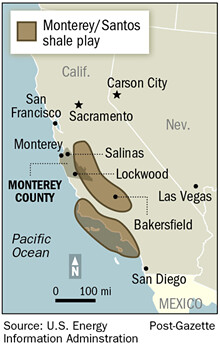 New documents reveal that, contrary to its public statements, the state’s top toxics regulator knew about lead and arsenic emissions at Exide Technologies for years but looked the other way, Consumer Watchdog said today.
New documents reveal that, contrary to its public statements, the state’s top toxics regulator knew about lead and arsenic emissions at Exide Technologies for years but looked the other way, Consumer Watchdog said today.
The Department of Toxic Substances Control (DTSC) suspended Exide’s operations on April 24 and is now negotiating with the company on how to resume operations in heavily industrial Vernon where roughly one hundred residents live, but some 45,000 factory workers go every day.
“This serial toxic polluter should be shut down permanently and required to pay to clean up their mess,” said consumer advocate Liza Tucker. “The fact that the DTSC did not protect the public when people were in harm’s way is inexcusable.”
On the day of Exide’s suspension, DTSC Director Debbie Raphael told reporters that there was no reason to believe that hazardous releases were going into the LA River or drinking water. She said the DTSC suspended Exide’s operations after recently learning of dangerous arsenic emissions to the air and of leaky pipes releasing hazardous waste into the soil.
In fact, the DTSC knew of the emissions for years. Exide Technologies confirms this in a filing before the department contesting the shutdown and calling for a court hearing. “The DTSC has known of the issues raised in the Order and Accusation for an extended period of time, and has consented to Exide’s continued operation,” wrote the Los Angeles firm of Sheppard, Mullin, Richter & Hampton.
And the department could not draw conclusions about the drinking water as DTSC regulators say that Exide was never compelled to dig monitoring wells deeply enough to ascertain if contamination had reached water as deep as public drinking wells.
Documents obtained by Consumer Watchdog show that the DTSC knew that the lead battery recycler’s operations endangered the public, that lead and arsenic emissions were going into the air and accumulating at hazardous levels on the ground, and were washing away into the surrounding watershed. Lead exposure can cause learning disabilities and high blood pressure. Arsenic exposure can cause heart disease, strokes, and cancer.
A study prepared by e2 Environmental for Exide at the request of the California Regional Water Quality Control Board and shared with DTSC officials in 2007 said modeling of the dispersion of heavy metals from the site “suggest that in the last three years, Exide has contributed through deposition approximately 424 lbs. of lead in both 2004 and 2005 and 712 lbs of lead in 2006 to the watershed.”
A letter sent earlier this month to DTSC Director Debbie Raphael from DTSC Senior Hazardous Substances Engineering Geologist Philip Chandler makes clear that top staff resisted internal recommendations to do what was necessary to ensure long-term safety at the plant. The letter says:
- DTSC “has conveniently ignored for years” lead, arsenic and other heavy metal emissions that were permitted by air regulators but accumulated to hazardous waste levels on the ground.
- Exide’s own arsenic emissions source tests in 2010 and 2012, showed a significant spike in emissions over tests in 2006 and 2008. “DTSC had the ability to evaluate the change in emissions risk years before it issued this order” suspending the plant’s operations.
- Between 1999-2000, DTSC found lead at levels of 40 percent in the sediment at the bottom of the storm water retention pond and required Exide to clean it up. DTSC “was clearly aware” that the storm water drain lines were bringing lead particulates to the pond and that the lines were reportedly “perforated” so that they could leak into the soil on purpose.
The Exide facility emitted hazardous waste for years under a permit from the South Coast Air Quality Management District. This waste had a history of depositing and accumulating on the ground and roofs around the site.
In 2002, the DTSC issued an order requiring Exide to take measures to characterize the contamination and clean up 76 different waste units. In 2003, the DTSC fined Exide $40,000 for improper storage of used lead-acid batteries, but delayed payment because of Exide’s Chapter 11 bankruptcy filing.
The DTSC took emergency measures in 2004 and again in 2008 to force Exide to clean up a lead-contaminated drainage channel, and public areas like sidewalks, streets, and neighboring roofs. In between, in 2006, the DTSC fined the company $25,000 in 2006 for failing to minimize the possibility of hazardous releases. “DTSC and air regulators failed miserably in coordinating to prevent continuous accumulation of hazardous waste on the ground,” Tucker said.
Though DTSC regulators in Southern California pushed the company to investigate and clean up, higher ups deferred taking corrective action in favor of issuing a final permit to the company that never materialized. “While lead and arsenic were piling up, soaking into the groundwater, and also flowing into the Los Angeles River, Exide and its negligent operations were falling through the regulatory cracks,” said Tucker. “And top DTSC managers refused to force the company, which is a polluter on a national scale, into compliance.”
For more on the DTSC and toxic pollution around the state, see: http://www.consumerwatchdog.or…


 Making more than is necessary from a “bridge fuel”?
Making more than is necessary from a “bridge fuel”?
